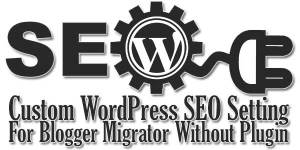
I had quite the experience running my store, and let me tell you, it has been a wild journey. Other than the ups and downs, the store has been pretty successful for the past eight years. When I first started, I had no clue if WooCommerce was going to carry me this far. Looking back now, I realise how much it shaped the way I handled my business.
In this blog, I am going to open up about the early days. The first step is always the hardest because starting your business the right way means making the right platform choice. For me, that was WooCommerce, but I had my fair share of doubts. I wondered if it would handle the kind of growth I wanted. I also questioned if I was just picking what was popular instead of what was right for me.
Along the way, some challenges almost made me switch platforms. Payment issues, theme problems, scaling problems, you name it. Each hurdle came with its headache. But I also discovered solutions that made me stick with it. Plugins, smarter store setups, better planning. These things slowly turned my store from a struggling project into a steady business.
So in this blog, I will be laying everything out. From what it takes to start on WooCommerce in 2025, to the challenges you may face, to the fixes that worked for me. At the end, I will also share a quick summary for anyone who just wants to skim. This way, you get both the full story and the key takeaways.
Table of Contents
Starting Up Your Online Store “The Right Way”:
So it is pretty crucial to run it the right way, and if your planning is not right, it all falls apart. I learned this the hard way with my store, and let me just say skipping steps never pays off. I had to step back and focus on the basics. Three things shaped how my store moved forward.
1.) Planning:
I had to sit down and sketch out what I wanted the store to be. I wrote everything down on paper first because that gave me clarity.
- Picked the niche I wanted to sell in and checked if people buy those items online
- Looked at the competitors and noted what they did right and what they did wrong
- Made a simple roadmap of what my store would look like, not fancy, just enough to guide me
2.) Budgeting:
This was the part I thought I could wing, but it set me back until I did it properly.
- Listed every cost, from the domain to themes and plugins
- Set a clear monthly spend limit so I don’t burn cash without knowing
- Kept a separate small amount aside for marketing because traffic won’t just come on its own
Note: Make sure that you use the go for strategies for your digital marketing budget as well. Promotion is another way to gain traffic.
3.) Startup:
Once planning and budgeting were ready, I moved to starting things. This was when it got real.
- Picked WooCommerce because it gave me flexibility without paying a huge fee
- Installed only the plugins I needed at first, later I added more as the store grew
- Focused on making the website look clean and easy to use instead of wasting time on a perfect design

Challenges To Expect For A WooCommerce Store Today:
Running a WooCommerce store in 2025 still comes with its share of headaches. A big one is managing too many plugins that don’t always play nice with each other, updates clash, functions break, or your site slows right down. Then there’s managing site speed, checkout confusion, security worries, and keeping customer data safe. All of that still trips folks up, myself included.
One problem I hit early on was when I wanted users to share more info during signup. By default, WooCommerce won’t ask. That’s where a registration fields plugin helped solve it. With that plugin, I could add extra fields and collect what mattered to my store without messing with code.
Some real challenges store owners still face in 2025:
- Plugin Conflicts and Bloat – too many add-ons can slow everything down or crash your store.
- Performance Needs – stores with lots of products or traffic struggle unless they use better hosting or caching.
- Security Risks – running outdated plugins opens up your site to hacks, malware, or phishing.
- Support Overload – managing orders and customer issues across emails and dashboards wastes time and frustrates everyone.
Here’s how you can tackle it:
- Do regular plugin audits and delete what you don’t need.
- Use a plugin like Custom user registration fields for WooCommerce to collect the info your store needs at signup.
- Invest in good hosting and caching to keep your site fast.
- Keep everything updated and add basic security tools or scans to stop attacks.
These challenges are not going away anytime soon. But having tools like custom signup fields and good maintenance habits helps you stay ahead as your store grows.
Is WooCommerce Still the Top eCommerce Platform?
Yeah, WooCommerce still holds its ground, but the ecommerce world’s big and other platforms are giving it a run for its money in 2025.
Shopify is way easier for beginners to grab. You can have a full store live in minutes. Tons of themes and apps. Downside is it’ll cost you monthly and extra for those apps.
BigCommerce brings plenty of built-in features for bigger stores. Stuff like multi-currency, shipping rates, and inventory tools all come out of the box. Feels like less tinkering, but customisation is not as open as WooCommerce.
Magento (aka Adobe Commerce). When it comes to WooCommerce vs Magento, this one’s built for big business. It’s open-source but also enterprise-level. You get serious power for big catalogues, complex workflows, but you also need dev skills to deal with it.
Wix is an all-in-one builder that’s slick for design startups. Easy drag-and-drop, AI help, and affordable for small stores. Not nearly as flexible as WooCommerce or Magento, but great if you want fast and simple.
So, Where Does That Leave WooCommerce?
WooCommerce still wins on control and custom fit for WordPress users. Shopify is smoother for non-tech folks. BigCommerce gives enterprise tools without much work. Magento’s raw power, but it needs brains to run. Wix is fast for startups. It doesn’t look like WooCommerce is losing ground yet. It just depends on how hands-on or hands-off you want to be.
WooCommerce in 2025: Should You Go For It?
If someone is still wondering whether WooCommerce is the right choice in 2025, the short answer is yes. It has been one of the most stable ecommerce platforms for years, and it still holds a big share of the market. The reason is simple: it gives store owners control and freedom that most other platforms fail to match. You can build a small shop or run a big catalogue of thousands of products, and it can handle it.
When I look at my own experience with WooCommerce, I can honestly say it has been reliable. There are times you deal with updates or plugin conflicts, but that happens with almost any open source tool. The real benefit is that there is always a plugin or a solution out there, and most problems have been solved before by someone else in the community. That kind of support is what makes it strong.
So how many more years does it have left? I would say plenty. WordPress itself is not slowing down, and WooCommerce grows with it. With more developers creating plugins and themes every day, it’s not going anywhere soon. Some people might get tempted by newer platforms like Shopify or Wix, but for flexibility and ownership, WooCommerce still holds the edge.
From my side, I do not see myself moving away from WooCommerce. It may not be perfect, but it is good enough to run a store the way I want. As long as you keep the right plugins and updates in check, you can expect to run a store on WooCommerce for many years ahead without feeling outdated.

 About the Author:
About the Author:
















Be the first to write a comment.